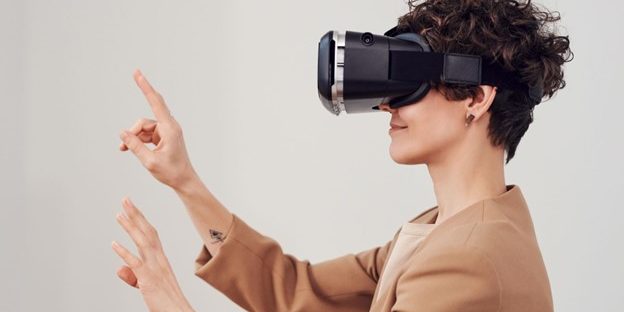FLASH TRENDS by Silestone Institute
- The metaverse is revealed as a perfect creative space for the design of interiors, surfaces and equipment.
- The Silestone Institute claims the role of the ‘virtual home’ as a driver and catalyst of trends.
In 1980, an entrepreneur named Dennis Hope divided the Moon into plots to sell at popular prices ranging from $25 to $500. His company, christened Lunar Embassy in 2014, is still operating today, but has been far surpassed by a new competitor. Another world the one where everyone wants to have their ‘land’ and no one wants to give up design: the metaverse.
Barcelona, November 28, 2022 – The metaverse is a new digital dimension recreated or not from reality in which we can relate three-dimensionally with other users as we would in a conventional environment, but without its physical limitations, leaving behind screens and using glasses or similar gadgets. From the Silestone Institute they embrace this new universe in which, as something more than a test bench, to be able to continue applying innovations and solutions under a maxim: “where there is space, there is design”.
The premise that justifies the success of this digital dimension – confirmed throughout 2022 – and everything that happens in it is simple: man may not return to the moon, but he will certainly be in the metaverse. “As will be all the brands and companies that want to continue advancing and progressing in this new market and the possibilities it offers to the user”, emphasize from Silestone Institute, an international platform for research, opinion and dissemination of knowledge about the home space.
Driven by the ‘pandemic effect’, when society as a whole had to learn to work and interact without leaving home, “the conquest of the metaverse begins, like any other environment, with space. Specifically, by its foundations and the homes that will be built on them,” they add.
“2022 has been the year of the metaverse, but, above all, of real estate,” they observe from the Silestone Institute. The sale of plots in different metaverses is booming, a market that in 2021 reached $500 million, according to data from MetaMetrics Solution. A reality that contrasts with the current real estate market, slowed by rising interest rates. In the metaverse, the pace is different and the prospects are endless: land, houses, offices, companies or private islands are being sold. Digital assets appreciate more than traditional real estate and investors can find new opportunities and investment avenues.
Sandbox is one of those potential universes where many figures have already jumped in to buy, but there are others: Upland, Decentraland, Fortnite, etc. There is also a metaverse called Next Earth which is the ‘copy’ of Earth, with exact replicas of houses or buildings of the conventional world that are also for sale. But, as the Silestone Institute points out, the metaverse is also a powerful tool for evolving interior design and furnishing all kinds of spaces, both real and virtual.
Designers of a new reality
Beyond augmented reality or the faithful replication of reality, housing and its rooms are revealed as one of the main drivers of the metaverse. A field in which reality and fiction go hand in hand and are establishing a new paradigm with more actors and solutions. If, as stated by the UN, people spend 90% of their time indoors, it seems that the same will happen in the meraverse. “The interior space of homes, offices and shopping centers, among others, will be the meeting point between the users of the metaverse and the cornerstone by which to project new trends and styles,” they observe.
The metaverse inhabits bathrooms and kitchens, but also all kinds of surfaces. “Architects, designers and decorators must remain attentive to all the possibilities that the metaverse opens up for them, as a trend-catching niche market,” they argue.
What does the metaverse offer to interior design
Silestone shares three advantages that are already a reality:
- The possibility of making virtual visits to replicas of houses to see how they really are without moving is one of the most attractive advantages that the metaverse offers, but there are also emerging real estate agencies specialized only in virtual housing.
- In the metaverse, construction does not come to a standstill or take forever. Deadlines are met and the viability of the project is assured. Many people can get involved in home or office decoration projects, plan their ideal residence in the metaverse and even rent it for parties or meetings.
- Brands are already initiating exclusive creation processes without the classic limitations of the real world (time, materials, initial investment, etc.), moving more efficiently and agilely towards more innovative solutions.
